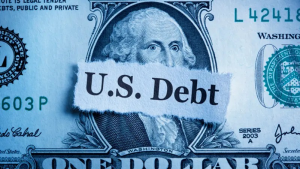The Eurozone annual Harmonized Index of Consumer Prices (HICP) rose 2.4% in March, slowing from a 2.6% increase in February, according to the official data released by Eurostat on Wednesday. The reading missed the market consensus for a 2.6% growth in the reported period.
The Core HICP inflation softened to 2.9% YoY in March, as against February’s 3.1% rise while missing the estimates of 3.0%.
On a monthly basis, the bloc’s HICP rose 0.8% in February vs. a 0.6% jump registered in February. The core HICP inflation came in at +1.1% MoM in the same period, compared to a 0.7% rebound seen previously.
The European Central Bank’s (ECB) inflation target is 2.0%. The old continent’s HICP inflation data have a significant impact on the market’s pricing of the ECB interest rate outlook.
Key details from the Eurozone inflation report (via Eurostat) Looking at the main components of euro area inflation, services is expected to have the highest annual rate in March (4.0%, stable compared with February), followed by food, alcohol & tobacco (2.7%, compared with 3.9% in February), non-energy industrial goods (1.1%, compared with 1.6% in February) and energy (-1.8%, compared with -3.7% in February).
Separately, the Eurozone Unemployment Rate steadied at 6.5% in February vs. January’s revised 6.5% print.
EUR/USD reaction to the Eurozone inflation report The Euro is unfazed by the softer-than-expected Eurozone inflation data. EUR/USD is trading almost unchanged on the day at 1.0770, at the press time.
(This story was corrected on Wednesday at 09:19 GMT to say that "Separately, the Eurozone Unemployment Rate steadied at 6.5% in February," not 6.54%)
Euro price today The table below shows the percentage change of Euro (EUR) against listed major currencies today. Euro was the strongest against the Japanese Yen
The Harmonized Index of Consumer Prices (HICP), a measure of inflation for the Eurozone, will be released on Wednesday, April 3. The inflation data from the old continent will be closely scrutinized by the European Central Bank (ECB) against rising speculation that the bank could start its easing cycle as soon as at its June event.
A glimpse at recent European data saw consumer prices in the euro bloc climb at an annualized 2.9% in the year to December 2023, just to recede in the subsequent two months to 2.8% and 2.6%, a move that mirrored other G10 nations.
In her last comments on March 20, ECB’s President Christine Lagarde expressed difficulty in determining whether the current price pressures stem merely from delays in adjusting wages and services prices, combined with the cyclical fluctuations in productivity, or if they indicate persistent inflationary trends.
Lagarde added that, unlike previous phases of their policy cycle, there are indications that the anticipated disinflationary trajectory will persist. Should the data unveil a significant correlation between the underlying inflation trend and the ECB projections, Lagarde thinks the bank can transition into the phase of scaling back its policy measures.
What to expect in the next European inflation report? As a result, economists anticipate that Core HICP inflation will rise by 3.0% on a yearly basis in March (from 3.1%), while the headline gauge is seen rising by 2.6% from a year earlier, matching the gain observed in the previous month.
Reinforcing the idea of persistent disinflationary pressures, the advanced Consumer Price Index (CPI) in Germany rose by 2.2% on a yearly basis in March, down from February’s 2.5% gain.
According to the ECB Consumer Expectations Survey (CES), the median predictions for inflation in the next 12 months dropped from 3.3% to 3.1%. However, expectations for inflation three years ahead stayed steady at 2.5%.
When will the Harmonised Index of Consumer Prices report be released and how could it affect EUR/USD? Eurozone preliminary HICP is due to be published at 09:00 GMT on Wednesday.
Heading into the highly-anticipated inflation release from Europe, the Euro (EUR) is struggling below the round milestone of 1.0800 against the US Dollar (USD), as investors continue to assess the likelihood of the start of the easing cycle by the Federal Reserve (Fed) in June.
According to Pablo Piovano, Senior Analyst at FXStreet, “Looking ahead, the EUR/USD is anticipated to encounter initial resistance at the key 200-day SMA at 1.0833. A move above this zone in a convincing fashion should restore the constructive bias and potentially allow for further gains in the short-term horizon.”
Pablo adds, “On the flip side, a reach of the so-far April low of 1.0724 (April 2) could trigger a deeper decline towards the 2024 low of 1.0694 (February 14).”













